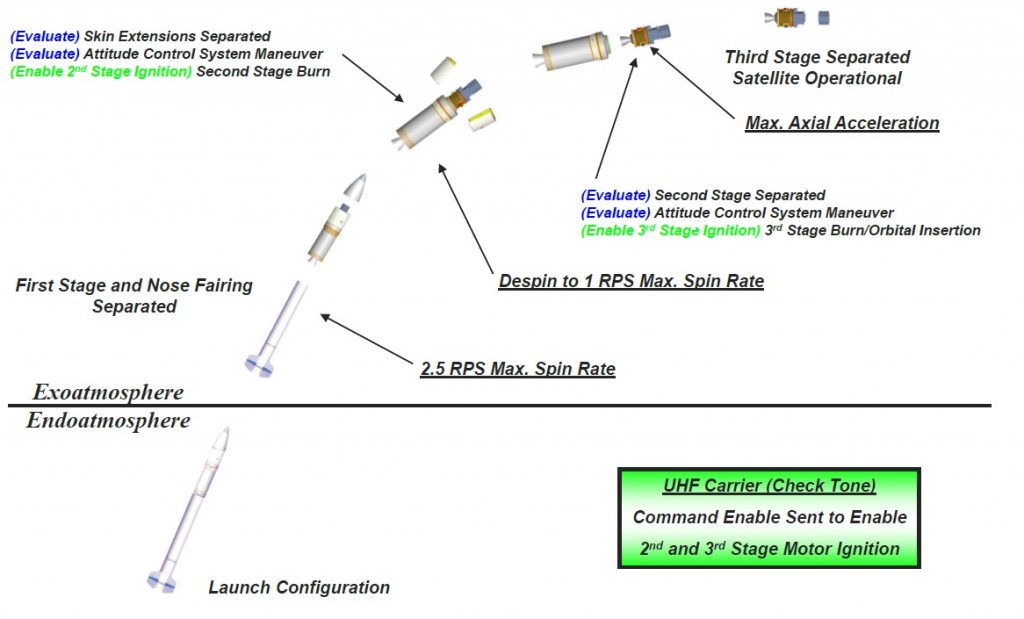SPARK (Super Strypi)
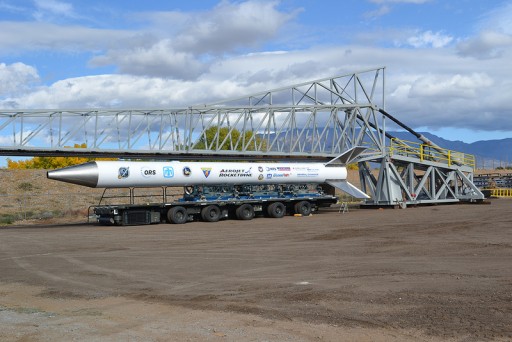
SPARK, the Spaceborne Payload Assist Rocket – Kauai, also known as Super Strypi, is an American space launch system developed by Sandia National Laboratory, the University of Hawaii and Aerojet Rocketdyne for the launch of small satellites to Low Earth and Sun Synchronous Orbit. It finds its origin in the Strypi sounding rocket designed in 1962 with the intent of using it to loft nuclear warheads into space for exo-atmospheric testing – a function it fulfilled only once with the majority of its several dozen launches dedicated to experiments operated by Sandia National Lab.
Taking the Strypi design as a basis, SPARK is a three-stage solid-fueled carrier rocket developed under the Low Earth Orbiting Nanosatellite Integrated Defense Autonomous System (LEONIDAS) program funded by the Operationally Responsive Space Office of the U.S. Department of Defense. Sandia remains the prime contractor for the rocket systems with Aerojet Rocketdyne producing all the solid rocket motors.
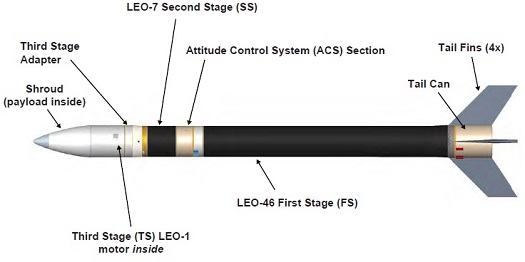
| Type | Expendable Launch System |
| Manufacturer | Sandia Nat. Lab, Aerojet Rocketdyne |
| Length | 18.9 meters |
| Diameter | 1.32 meters |
| Launch Mass | 28,100 kilograms |
| Stage #1 | LEO-46 |
| Stage #2 | LEO-7 (mod. Orbus-7S) |
| Stage #3 | LEO-1 (mod. Orbus-1S) |
| Payload to SSO | 275 kilograms (400km, 98°) |
SPARK is operated from LP-41 at the Pacific Missile Range Facility at Barking Sands from where it can deliver payloads of up to 275 Kilograms to Low Earth Orbit. Although starting out as a program developed under military guidance, the overall aim is to turn SPARK over to a commercial launch provider to conduct missions for both the military and the commercial sector in which SmallSat launchers will become more and more important given the trend of miniaturization in satellites. SPARK comes at a price of $15 million per launch, targeted to drop to $12 million for commercial operation.
SPARK is designed to fulfill the requirements for short-notice launch readiness to fly Operationally Responsive Space Office missions.
SPARK is a three-stage rocket with a launch mass of 28 metric tons and a length of close to 19 meters. The rocket can deliver 275 Kilograms to a 400-Kilometer orbit at a 98° inclination when launching from Barking Sands and 300kg to a standard 400km/28.5° orbit when launching from Cape Canaveral.
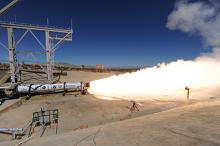
The first stage of the SPARK rocket is designated LEO-46, built by Aerojet Rocketdyne like all SPARK stages. It measures 1.32 meters in diameter and is 12.2 meters long consisting of a metal casing, insulation material and a rigid nozzle on its aft end. The stage holds approximately 20,000 Kilograms of HTPB-based solid propellant. LEO-46 has a launch mass of around 22.5 metric tons and burns for 73 seconds, delivering a thrust of 1,335 Kilonewtons.
SPARK uses a rail launch system in which the launch vehicle is initially guided by a truss-mounted rail to achieve the proper launch azimuth by physically rotating the rail to the appropriate heading and setting the desired ascent angle. This eliminates the need for a complex guidance system thus cutting cost and reducing weight.
During first stage flight, SPARK uses spin-stabilization and its tail fins to remain in a stable ascent position. The nominal spin rate during first stage flight is set for 2.5 revolutions per second.
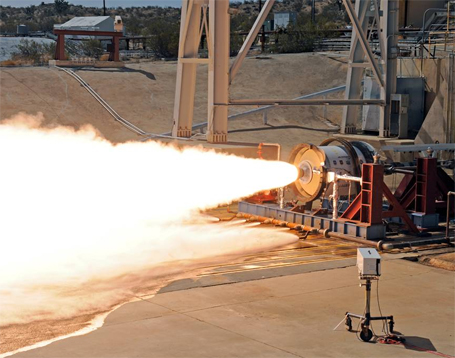
The second stage of SPARK is known as LEO-7, largely based on the Orbus-7S propulsion module used in the 1980s and 90s as an upper stage motor in the launch of Geostationary Satellites, using the third stage motor of the Minuteman 3 missile as a basis. It measures 1.32 meters in diameter and is 2.27 meters long with a launch mass of around 3,550 Kilograms including 3,350kg of propellant. LEO-7 delivers an average thrust of 153.5 Kilonewtons over its one-minute burn, peaking at 191kN at a specific impulse of 282 seconds. It operates at a chamber pressure of 35 bar and is equipped with a 90-centimeter long nozzle utilizing a 23.6 expansion ratio. For ignition, the Solid Rocket Motor uses a standard pyrogen ignition system.
The second and third stages use an active attitude control system and energy management for an on-target orbital insertion. The attitude control system is designed to reduce complexity and therefore is programmed to stick to a fixed attitude throughout the second and third stage burn with a spin rate of less than 1 revolution per second.
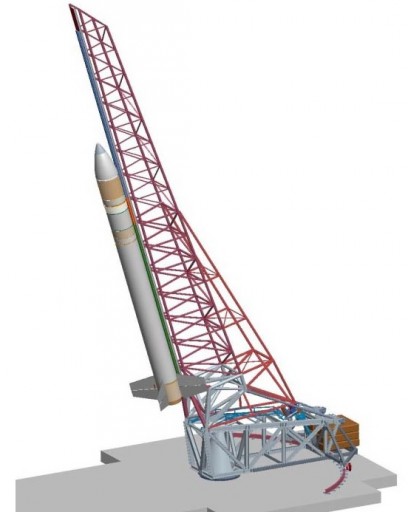
The third stage of the SPARK rocket, referred to as LEO-1, is a modified Orbus-1S rocket motor that has a history in previous Sandia rocketry projects. It uses a reduced diameter of 0.69 meters and is 1.25 meters long with a launch mass around 475 Kilograms. It delivers a thrust of 30.4 Kilonewtons at a specific impulse of 293 seconds over the course of a 39-second burn.
The third stage and payload stack are encapsulated in a payload fairing with a 1.32-meter diameter consisting of two sections – a skin extension wrapped around the third stage and the actual fairing part.
SPARK offers an extended fairing option to be suitable for many payload sizes. Fairing separation occurs during the coast phase between first stage separation and second stage ignition.
SPARK has been designed to be fitted with a number of payload configurations ranging from small satellites in different numbers and CubeSats or a combination of small satellites and CubeSats. To facilitate CubeSats, SPARK uses NASA Ames Payload Adapters and Deployers known as PADs, each capable of holding 24 CubeSat Units in any combination of 1, 2, 3, 6 and 12U CubeSats.
SPARK Flight Profile
